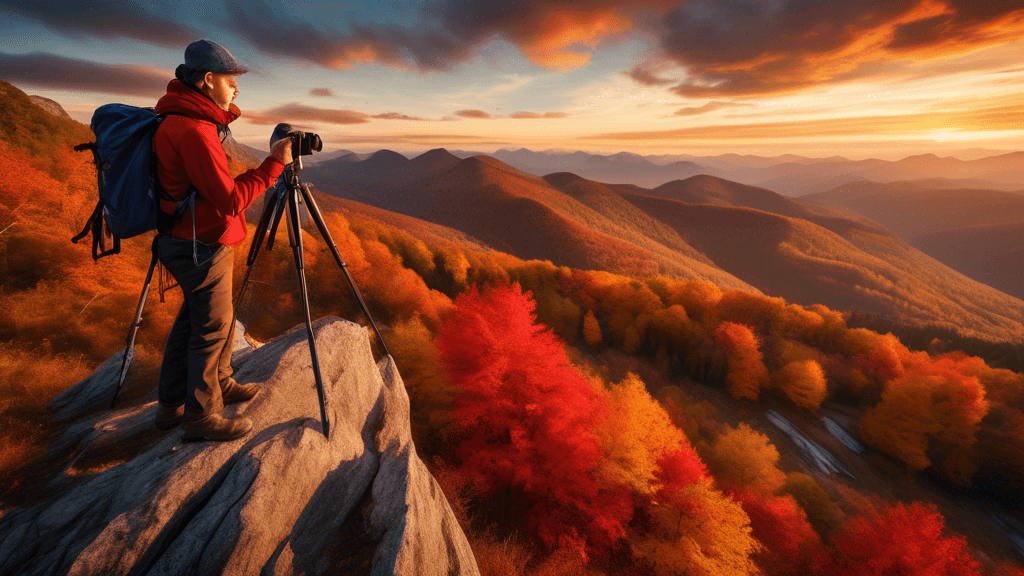
Capturing Colors: Exploring Mountain Photography and Its Vibrant Palette
Share
The Vibrant Palette of Mountain Photography
Have you ever wondered why mountain photography has the power to take our breath away? Is it the dramatic elevation, the solitude, or could it be the hypnotizing spectrum of colors captured by the lens of the mountain photographer? This niche of photography, rich with its vivid and constantly changing colors, offers more than just a visual feast—it invites viewers to a deeper contemplation of nature's artistry and diversity.
Understanding Color Dynamics in Mountainous Landscapes
Mountain landscapes are dynamic ecosystems where the interplay of light and color creates scenes of staggering beauty. The colors you capture in mountain photography can vary dramatically based on several factors:
- Time of Day: The 'golden hours' at dawn and dusk are renowned for their soft, diffused light that enhances the colors of mountain skies and landscapes.
- Season: Each season repaints mountains in its own palette, from the lush greens of spring to the fiery reds and oranges of autumn to the stark, crystalline whites of winter.
- Weather: Changes in weather can bring about dramatic shifts in mood and color, where sunny skies contrast with the dramatic grays of storm clouds.
- Altitude: Higher altitudes often feature more intense sunlight and UV light, which can saturate or alter the perceived colors of the landscape.
The Technical Side of Capturing Colors
Capturing the true colors of mountains requires both technical skill and artistic intuition. A key question to ponder is, how do photographers ensure they accurately capture these hues? Here are a few techniques:
- White Balance: Adjusting the camera's white balance is crucial for ensuring colors are true to life, especially under varying lighting conditions.
- Polarizing Filters: These can enhance the colors of the sky and foliage, reduce glare, and increase contrast in your photos.
- High Dynamic Range (HDR) Imaging: Using HDR techniques can help capture greater detail in both the darkest and lightest parts of a scene, preserving the vibrancy of mountain colors.
The mountainous landscape is a palette that is constantly evolving; capturing it is like trying to paint a song, notes landscape photographer Elizabeth Greene. Indeed, her statement encapsulates the enchantment of mountain photography—it's not just an act of capturing, but an art of interpretation and expression.
Challenges in Mountain Photography
While mountain photography can be incredibly rewarding, it also presents unique challenges:
- Access: Remote and rugged terrains can be physically taxing and often inaccessible without proper gear and preparation.
- Changing Weather Conditions: Mountains often have unpredictable weather that can change rapidly, posing risks and opportunities for photographers.
- Environmental Impact: Photographers must also consider their impact on the fragile ecosystems within mountain environments.
Mastering mountain photography demands respect for nature, persistence, and adaptability. It's about being at the right place at the right time and having the patience and readiness to capture the fleeting moments that mountains graciously host.
Why It Matters: Beyond the Aesthetic
Beyond their aesthetic value, these photographs serve a larger purpose: they are potent tools for environmental awareness and conservation. Each image can highlight the stark realities of climate change, such as retreating glaciers and the loss of biodiversity. They provoke questions: are we as viewers, doing enough to protect these magnificent landscapes?
As we explore mountain photography, let us remember our responsibility to these natural wonders. Whether a photographer or an admirer, we share the duty to not only celebrate but also protect these vibrant canvases of our planet.
A Call to Action
If mountain photography has inspired you, consider turning this inspiration into action. Support conservation efforts, educate others about the environmental issues facing these landscapes, and perhaps, take up the camera yourself to capture and share the story of mountains through your lens.
After all, every photograph taken, every story told, is a step towards understanding and preserving the vivid beauty of our world's mountainous realms.





